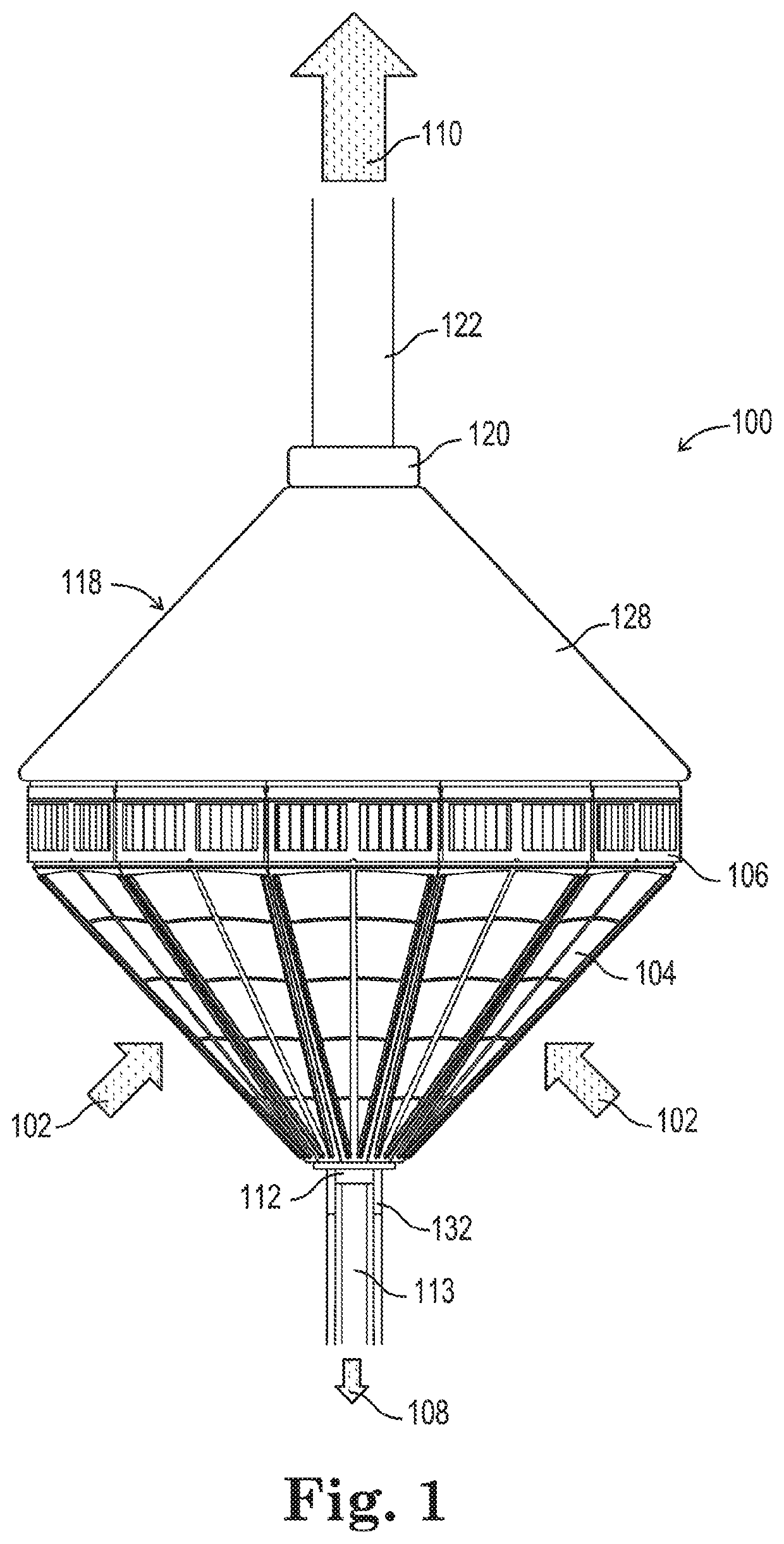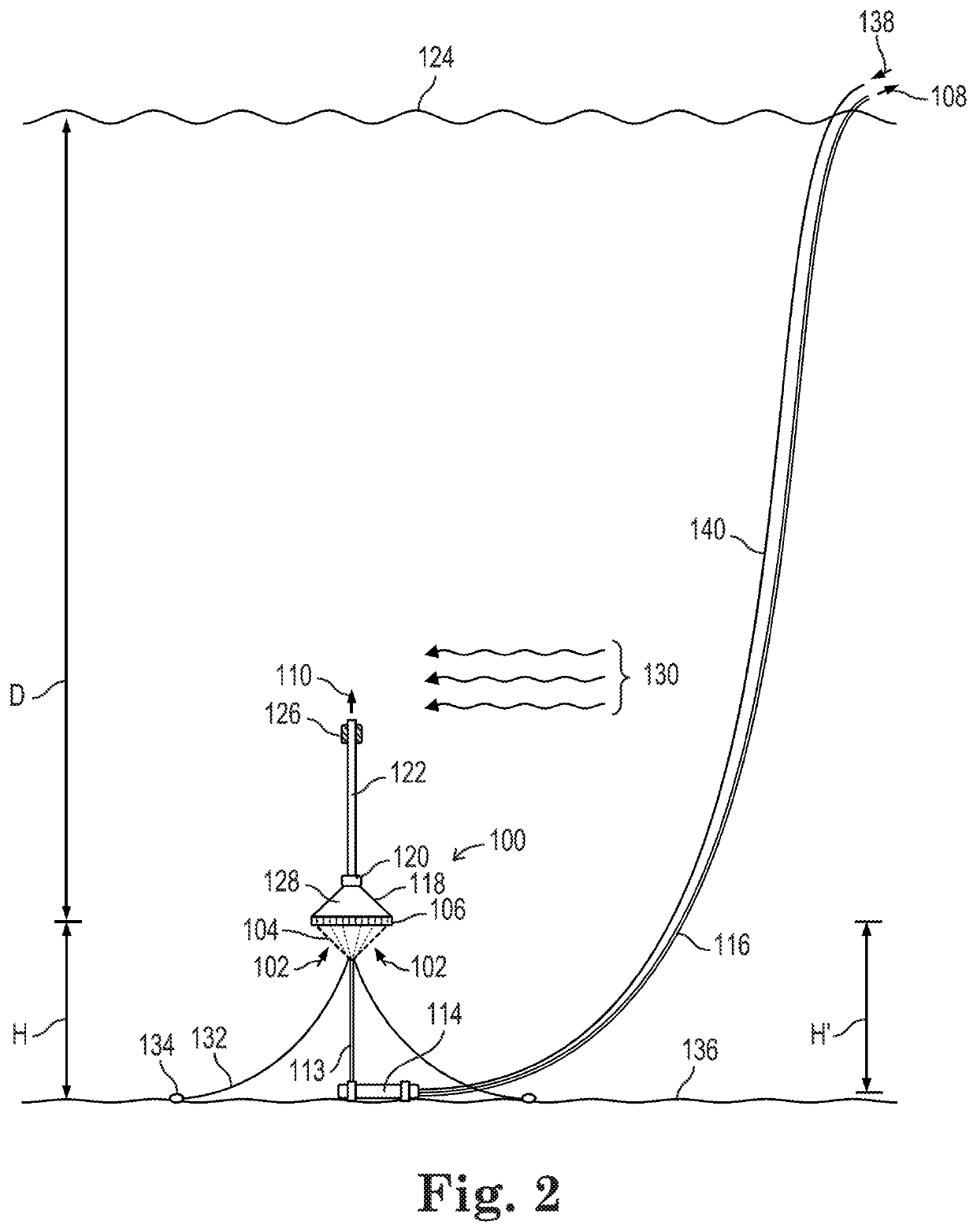Submerged water desalination system with product water pump cavitation protection
a desalination system and submerged water technology, applied in the direction of liquid fuel engines, machines/engines, membranes, etc., can solve the problems of high cost, high cost, and high power demand of ro units, so as to reduce the pump output, discourage cavitation, and reduce cost
- Summary
- Abstract
- Description
- Claims
- Application Information
AI Technical Summary
Benefits of technology
Problems solved by technology
Method used
Image
Examples
Embodiment Construction
[0024]The recitation of a numerical range using endpoints includes all numbers subsumed within that range (e.g., 1 to 5 includes 1, 1.5, 2, 2.75, 3, 3.80, 4, 5, etc.).
[0025]The terms “a,”“an,”“the,”“at least one,” and “one or more” are used interchangeably. Thus, for example, an apparatus that contains “a” reverse osmosis membrane includes “one or more” such membranes.
[0026]The term “airlift” when used with respect to a pump refers to a device or method for pumping a liquid or slurry by injecting air (and preferably only by injecting air) into the liquid or slurry.
[0027]The term “automatic” when used with respect to control of a submerged pump means that the control operates in the vicinity of and based on conditions in such pump, and without requiring the sending of signals to or the receipt of signals from a surface vessel, platform, or other non-submerged equipment.
[0028]The term “brine” refers to an aqueous solution containing a materially greater sodium chloride concentration t...
PUM
 Login to View More
Login to View More Abstract
Description
Claims
Application Information
 Login to View More
Login to View More - R&D
- Intellectual Property
- Life Sciences
- Materials
- Tech Scout
- Unparalleled Data Quality
- Higher Quality Content
- 60% Fewer Hallucinations
Browse by: Latest US Patents, China's latest patents, Technical Efficacy Thesaurus, Application Domain, Technology Topic, Popular Technical Reports.
© 2025 PatSnap. All rights reserved.Legal|Privacy policy|Modern Slavery Act Transparency Statement|Sitemap|About US| Contact US: help@patsnap.com



